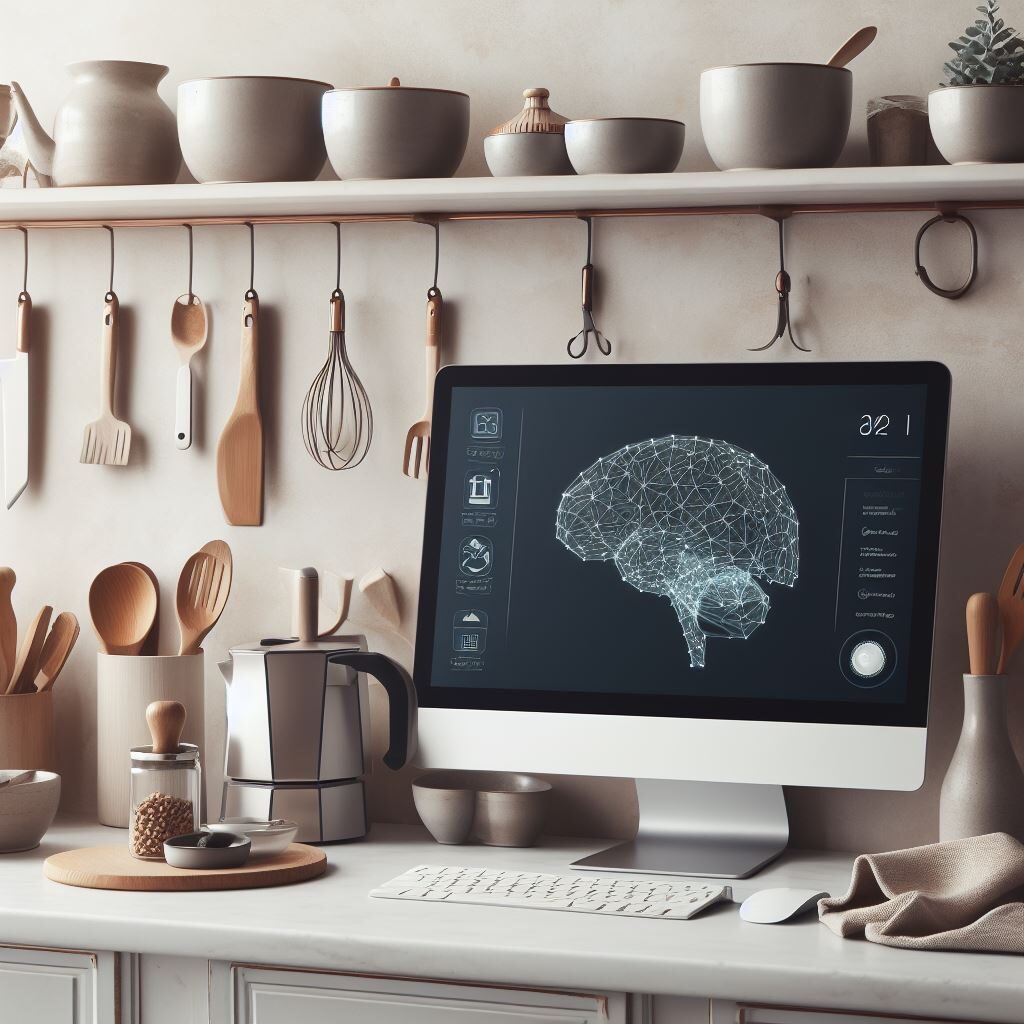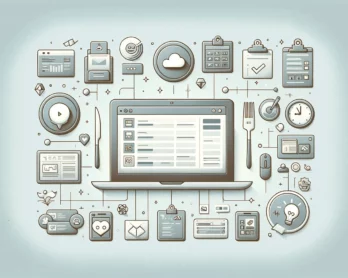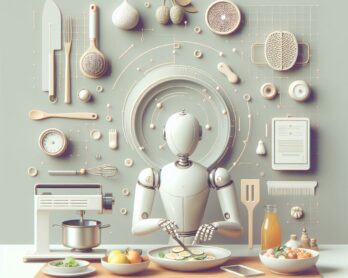Imagine a world where cooking and eating are transformed by an artificial intelligence kitchen, making your culinary journey seamless and more enjoyable. From AI-powered appliances that simplify food preparation to personalized menu recommendations based on your taste preferences, the future of the culinary world is undoubtedly exciting and innovative. In this blog post, we will explore the fascinating ways AI is revolutionizing cuisine and the opportunities and challenges it brings to both professionals and home cooks alike in the realm of artificial intelligence kitchen.
Key Takeaways
AI is revolutionizing the culinary industry by optimizing operations and improving customer experiences.
Smart ovens, robot chefs, personalized recommendations & efficient ordering processes are transforming traditional cooking methods.
We need to consider ethical considerations when embracing AI in the kitchen for future advancements.
The Rise of AI in the Kitchen
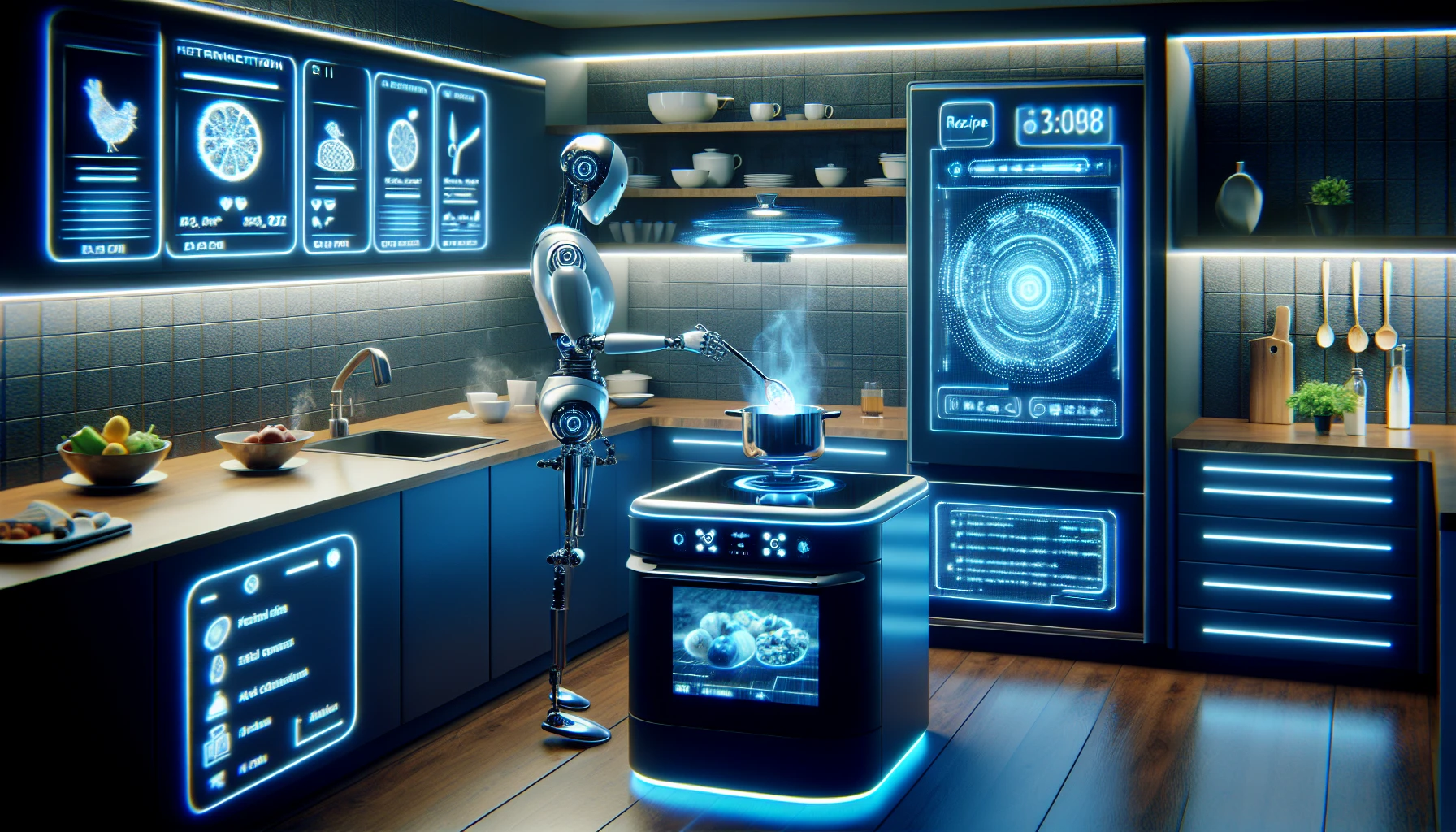
The restaurant industry, also known as the restaurant business, has embraced AI to streamline operations and enhance customer experiences. From food preparation to inventory management, AI technologies are making their mark in the culinary world. As restaurant owners implement AI to analyze data, manage inventory, and create targeted marketing campaigns, customers benefit from improved satisfaction and reduced wait times.
AI holds a pivotal role in food preparation and is a key player in optimizing restaurant operations within the food industry.
The Role of AI in Food Preparation
In the realm of food preparation, artificial intelligence has become an indispensable tool, automating tasks that were once time-consuming and prone to human error. It can create new and innovative recipes by analyzing flavor profiles, nutritional values, and ingredient combinations, leading to dishes that delight the taste buds and cater to a variety of dietary needs. AI can also optimize food quality inspection and supply chain management, ensuring high standards of food safety and reducing food waste.
Robot chefs equipped with computer vision and machine learning capabilities can replicate the dexterity and skills of professional human cooks. These AI-driven chefs can reduce food waste and costs by eliminating the inaccuracies often associated with manual food preparation. With AI playing a significant role in food preparation, restaurants can cater to diverse customer preferences while maintaining top-notch quality and variety.
Streamlining Restaurant Operations
AI streamlines restaurant operations by:
Optimizing workflows
Managing staff efficiently
Tracking staffing and sales data to identify peak and off-peak hours, ensuring adequate staffing levels during busy times and reducing wait times for customers
Automating order-taking with voice assistants and AI-enabled software, making the process faster and more accurate.
Moreover, AI can assist in menu engineering, crafting enticing descriptions, and offering advice to make dishes more appealing visually. As a result, restaurants can optimize their menus to meet customer demand and enhance overall satisfaction. By embracing AI technologies, restaurants can run smoother daily operations and turn their big ideas into reality, ensuring a memorable dining experience for customers.
AI-Powered Cooking Appliances
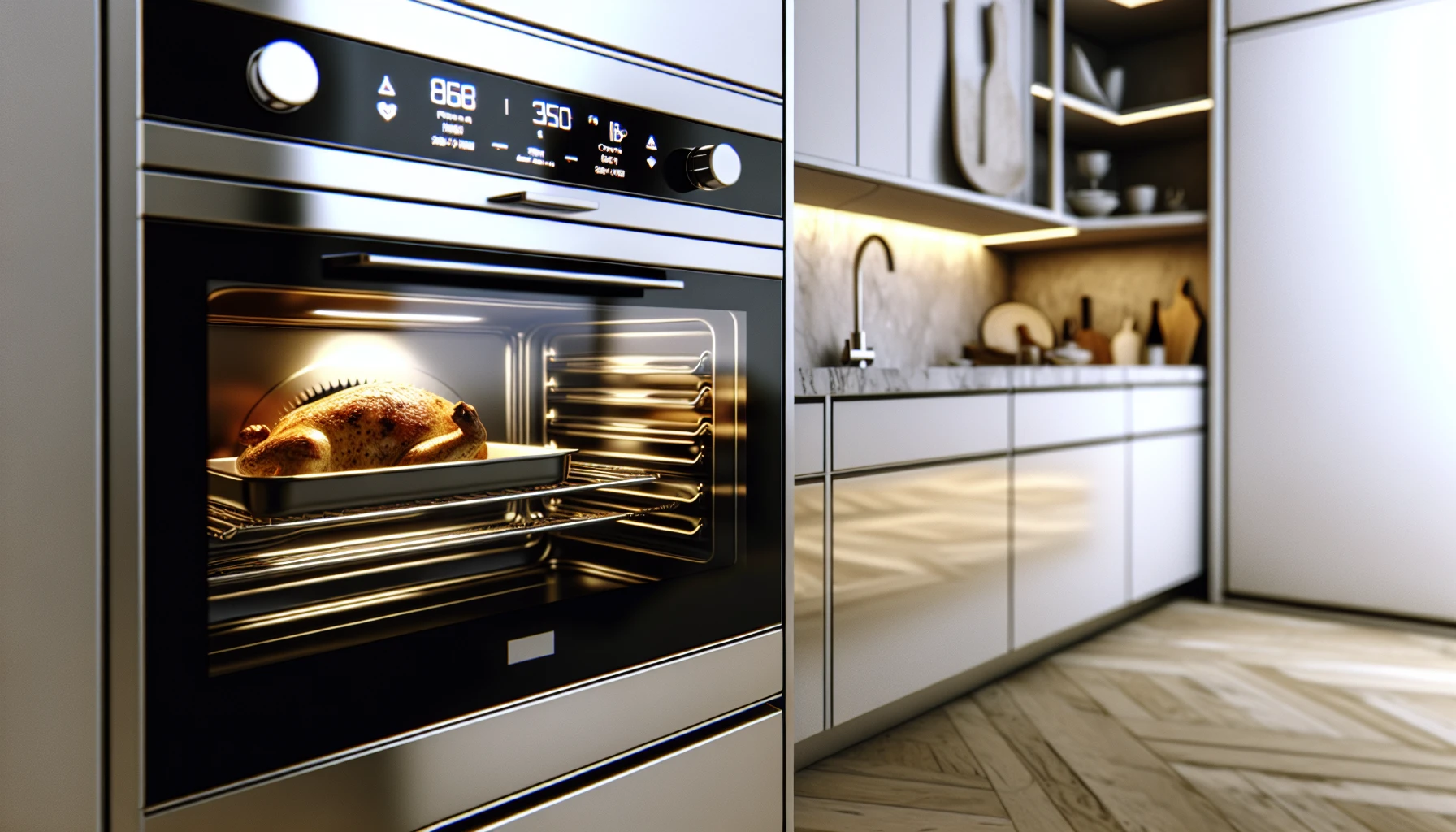
AI-powered cooking appliances, such as smart ovens and robot chefs, are revolutionizing the culinary industry, offering automation and precision that surpass traditional methods. These appliances can multitask, learn new recipes, and perform various cooking tasks, reducing the need for human labor while ensuring consistent and high-quality results.
A deeper understanding of smart ovens and robot chefs reveals their transformative impact on cooking methods.
Smart Ovens
Smart ovens are a great tool for home cooks and professionals alike. They use AI technology to adjust cooking times and temperatures automatically, ensuring perfectly cooked meals every time. Some features of smart ovens include:
Precise temperature control
Automated cooking programs
Built-in sensors that adapt to the type of dish being prepared
The ability to use barcodes or QR codes to set specific cooking times for each meal, guaranteeing consistent results.
Users of AI-powered smart ovens rave about their convenience and versatility. Popular models include:
Tovala Smart Oven Air Fryer
Amazon Smart Oven
June Oven
Miele
GE
JennAir
Samsung
These smart ovens can recognize food types, start cooking programs, and offer cooking tips, providing a personalized and guided cooking experience.
Robot Chefs
Robot chefs are designed to tackle a wide variety of dishes and automate many kitchen tasks. Equipped with sensors and AI systems, they can replicate the actions and movements of professional human cooks in real time. While these robot chefs can handle tasks such as:
setting temperatures
using the sink
adding ingredients
stirring pots
They currently cannot perform certain prep work like peeling potatoes or chopping vegetables.
Despite their limitations, robot chefs have the potential to revolutionize the culinary industry by reducing the risk of food poisoning and addressing labor shortages in high-volume kitchens. As AI technology advances, we can expect further improvements in robot chef capabilities, making them an increasingly integral part of the culinary world.
Enhancing Customer Experiences with AI
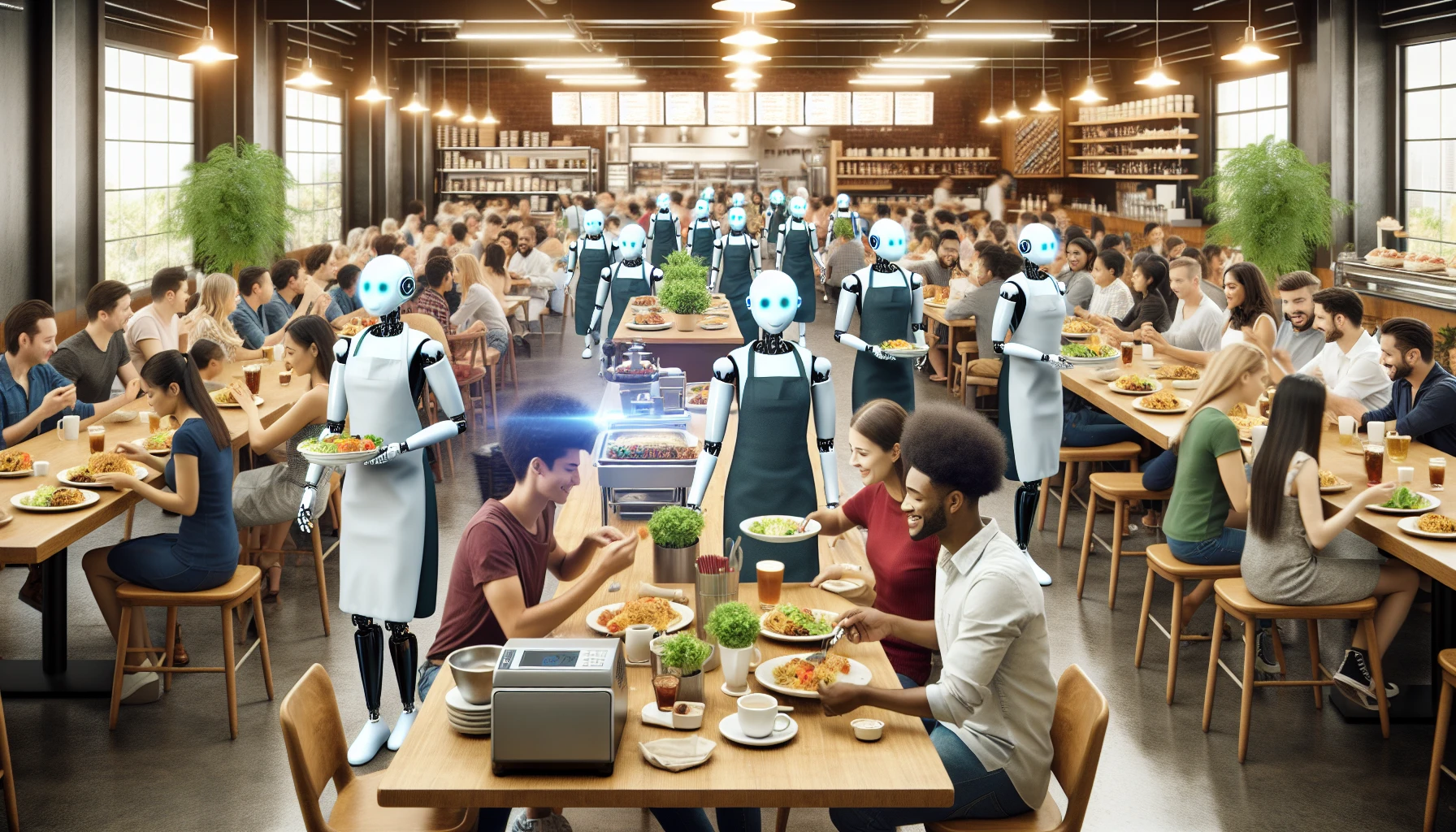
AI not only streamlines restaurant operations but also enriches the customer experience by providing personalized recommendations and reducing wait times. Through data analysis and machine learning, AI can tailor menu suggestions based on individual preferences and dietary needs, leading to increased satisfaction and customer loyalty.
AI-powered systems revolutionize customer experiences by handling customer inquiries through personalized recommendations and a more efficient ordering process.
Personalized Recommendations
AI analyzes customer data, such as preferences, past orders, and feedback, to offer personalized menu suggestions. By using machine learning algorithms, AI can identify patterns and trends in the data to understand individual customer preferences and make tailored recommendations. This data-driven approach ensures a more enjoyable dining experience and encourages repeat visits.
Restaurants that leverage AI-driven personalized menu recommendations can:
Enhance customer satisfaction
Optimize their operations
Reduce wait times
Deliver a more efficient and personalized service
Improve customer loyalty
Generate higher revenues
Reducing Wait Times
AI-powered systems can significantly streamline the ordering process, reducing wait times for customers. By automating order-taking and using predictive analytics to anticipate rushes and popular dishes, AI can cut down wait times by about 30 seconds on average. Faster and more accurate order taking not only improves customer satisfaction but also contributes to the overall efficiency of the restaurant operations.
Examples of AI-driven solutions for reducing wait times include:
OpenTable’s algorithms for suggesting tables and times that work for both customers and restaurants
Self-service kiosks for speeding up order processing
AI-enabled queue management and staff communication tools
By embracing AI technologies, restaurants can deliver a better dining experience, ensuring customer satisfaction and increased restaurant visits.
AI-Driven Inventory Management
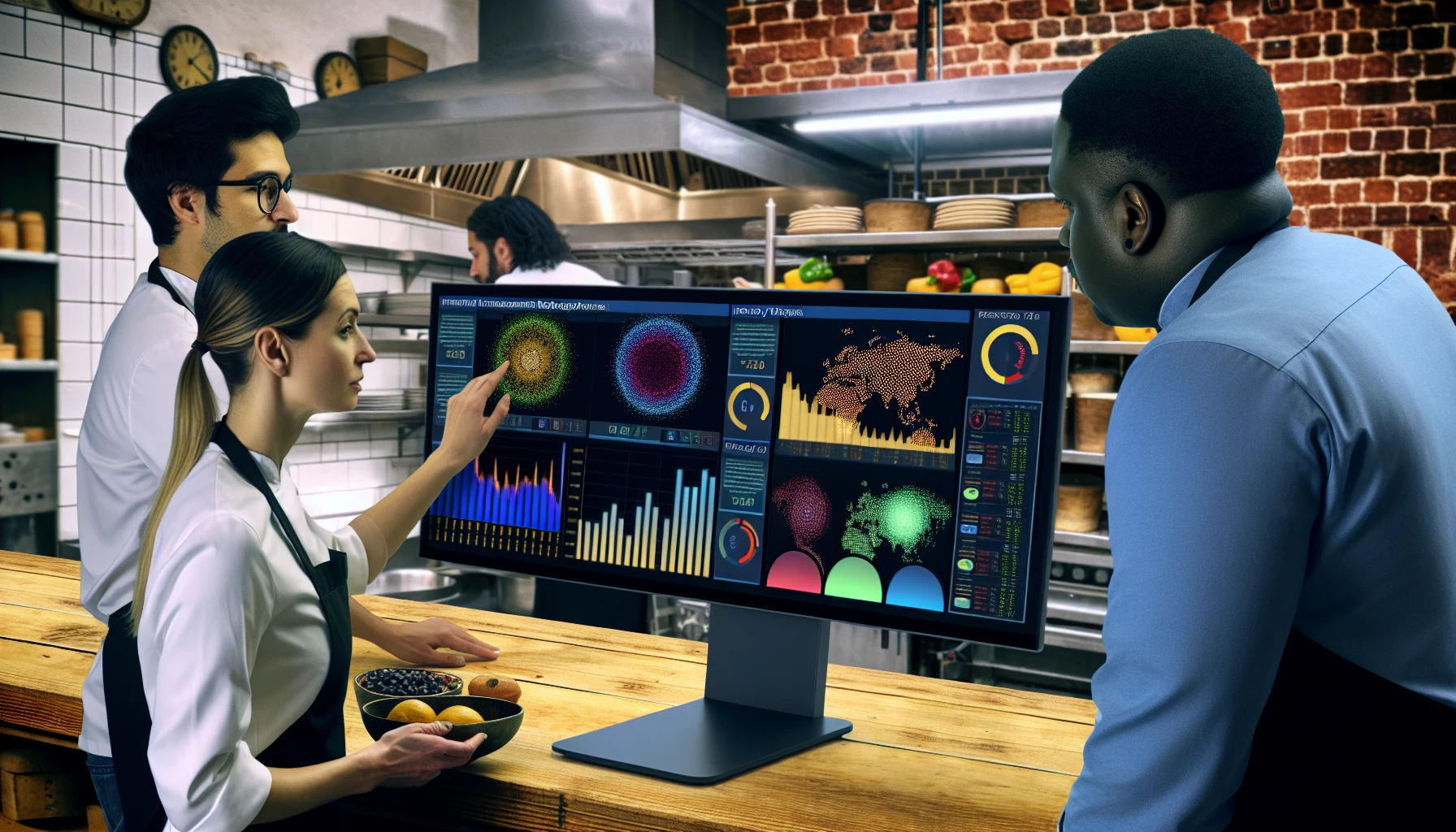
AI-driven inventory management systems offer several benefits for restaurants, including:
Predictive analytics that optimize stock levels and reduce waste
Efficient ordering processes that ensure the right amount of ingredients are on hand at all times
Automated inventory tracking and purchase orders, freeing up time for restaurant owners to focus on customer experiences
Improved efficiency and streamlined operations
Predictive analytics and efficient ordering processes both play a significant role in AI-driven inventory management.
Predictive Analytics
Predictive analytics can help restaurants anticipate demand by analyzing past data and current trends. It takes into account factors such as:
Past sales
Customer behavior
Seasonal fluctuations
External factors like weather and events
By understanding these patterns, predictive analytics enables restaurants to optimize their inventory levels, avoiding overstocking or stockouts, and reducing waste.
Tools such as:
BinWise
ChouxBox
Craftable
MarginEdge
offer features like sales tracking, automated reporting, sales forecasting, and recipe and menu analysis to assist with predictive analytics in restaurant inventory management. By leveraging these tools and the power of AI, restaurants can make data-driven decisions in managing their inventory, leading to cost savings and improved operational efficiency.
Efficient Ordering Process
AI can streamline the ordering process in restaurants, reducing the likelihood of errors and ensuring timely deliveries. By automating order placements and using historical data to predict demand, AI can help maintain optimal inventory levels and avoid over-purchasing or under-purchasing of ingredients. This not only saves money but also contributes to a more sustainable approach to food management.
AI-driven solutions that can increase efficiency, accuracy, and overall profitability of restaurant operations include:
AI kiosks
Self-service software
Voice AI
AI-enhanced online ordering systems
By adopting restaurant technology, restaurants can deliver better customer experiences while maintaining a smooth and efficient ordering process.
Embracing AI in the Culinary World: Challenges and Opportunities
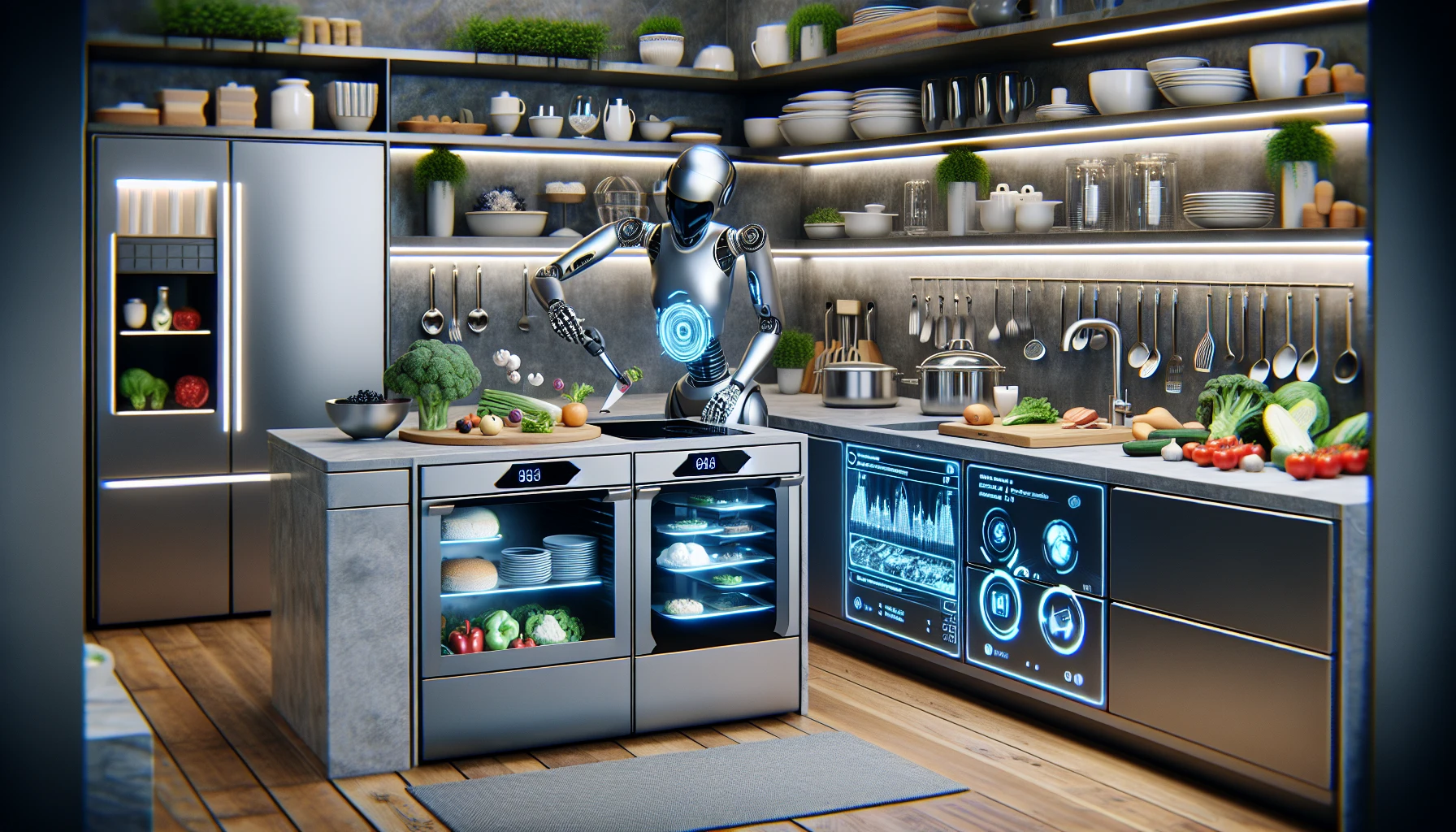
While AI offers immense potential to revolutionize the culinary industry, there are challenges and ethical considerations to address. For instance, job displacement and data privacy concerns need to be balanced with the benefits of AI implementation. Despite these challenges, the future of AI in kitchens is promising, with opportunities for further advancements in automation, personalization, and efficiency.
We need to consider both the ethical implications and the potential future of AI in the culinary industry.
Ethical Considerations
One significant concern regarding AI implementation in the culinary industry is job displacement. Studies indicate that over 80% of restaurant jobs can be performed by robots and AI, potentially replacing millions of jobs. Furthermore, AI systems can be costly, leading to job cuts as restaurant owners invest in new technology.
Another ethical consideration is data privacy. While there is no federal law specifically addressing data privacy in the culinary industry, state data privacy laws may apply. Culinary businesses must be transparent about their data collection practices and ensure the protection of personal information when using AI systems. Addressing these ethical concerns is essential for a responsible and sustainable implementation of AI in the culinary world.
The Future of AI in Kitchens
The future of AI in kitchens is full of exciting possibilities. As technology advances, we can expect further integration of robots and AI systems into commercial and home kitchens. AI-driven robot cooks can become more capable and versatile, providing solutions to labor shortages and enhancing food safety standards in high-volume settings.
At home, AI can make kitchen devices more personalized and intuitive, offering:
Tailored meal plans and recipes based on dietary information, food preferences, and health data
Cooking more accessible and enjoyable
A more personalized culinary experience
As we embrace AI in the culinary world, the potential for further advancements in automation, personalization, and efficiency is limitless.
Summary
The rise of AI in the culinary world has the potential to transform the way we cook and eat, revolutionizing food preparation, restaurant operations, and customer experiences. From AI-powered cooking appliances to personalized recommendations and efficient inventory management, AI offers immense opportunities for enhancing the culinary journey. As we embrace AI in the culinary world, we must address the challenges and ethical considerations, ensuring a responsible and sustainable approach to this exciting technology. The future of AI in kitchens is full of possibilities, and we look forward to the innovations and advancements it brings to our culinary experiences.
Frequently Asked Questions
How is AI used in the kitchen?
AI is revolutionizing the kitchen, helping automate tedious tasks like chopping and kneading, as well as optimize inventory management. This makes operations more efficient and cost-effective.
Can AI replace cooking?
It appears that robotics can take over some of the more tedious cooking tasks, but it won’t be taking over full responsibility anytime soon. AI might help cooks in the kitchen, but humans are still required to create delicious meals.
How is AI used in home appliances?
AI is being used in home appliances to monitor energy consumption, adjust usage based on user preferences, provide personalized experiences, and contribute to sustainability. Through smart systems, AI can make the process of managing electricity more efficient and convenient.
How does AI help in reducing wait times at restaurants?
AI makes ordering quicker and easier, allowing restaurants to better predict rushes and popular dishes, reducing wait times and improving customer experiences.
What are the ethical considerations when implementing AI in the culinary industry?
When implementing AI in the culinary industry, ethical considerations such as job displacement and data privacy must be taken into account to ensure everyone is protected.

